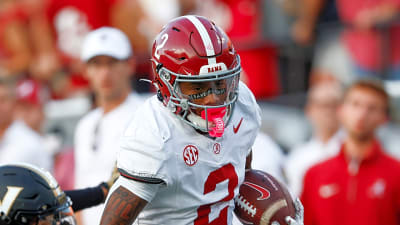Dana Holgorsen’s offense has long been synonymous with fireworks, but the real story lies in the architecture behind the explosion. Beneath the surface of big plays and breakneck tempo is a crafted scheme, one that blends Air Raid DNA with modern spread principles, tempo manipulation, and quarterback autonomy. This breakdown peels back the layers to reveal how Holgorsen’s system creates space, stresses defenses, and turns structure into scoring.
Route Concepts: Precision with Purpose
Holgorsen’s passing game remains rooted in Air Raid staples, but he’s refining them to fit Nebraska’s personnel and the defensive tendencies of the Big Ten. Mesh concepts are still central, now executed with tighter splits and pre-snap motion to mask intent and generate natural rubs from condensed formations, without drawing flags. His Y-Cross evolution plays directly to quarterback Dylan Raiola’s arm talent, layering deep-over routes with backside digs or posts to stretch safeties and create vertical stress.
Meanwhile, slot receivers are empowered with post-snap freedom in choice routes, allowing them to adjust based on coverage and leverage. It’s a trust-based system that demands precision and chemistry, and early signs suggest Raiola and his receivers are syncing fast.
Tempo Mechanics: Controlled Chaos
Holgorsen’s tempo philosophy isn’t just about going fast; it’s about going fast with intent. His “Turbo” packages feature pre-selected play sequences deployed immediately after explosive gains, forcing defenses to stay vanilla and limiting their ability to substitute or disguise coverage. Even within this rapid pace, Holgorsen incorporates late shifts and motion to identify defensive structures and manufac ture mismatches, proving that his tempo is as insightful as it is aggressive.
Adding another layer to Holgorsen’s tempo strategy is Raiola’s nuanced control of snap cadence. By subtly shifting the rhythm at the line of scrimmage, Raiola keeps defensive linemen off balance, making it harder for them to anticipate the snap and time their get-off. It’s a small detail with a large impact, helping Nebraska’s offense steal fractions of a second that can make all the difference in protection and route timing.
JP previews the #Huskers’ pass-catching corps and sees the potential for something that was sorely lacking last year.https://t.co/IiRpIc1m7V
— (@Huskermax) August 21, 2025
Big Ten Adaptability: Building for the Long Haul
The former Houston head coach understands that the Big Ten demands a different brand of football than the wide-open shootouts of the Big 12, and his scheme is evolving accordingly. He’s leaning heavily into run game integration, favoring duo and gap concepts over the zone-heavy looks of his Houston days, and tapping into Raiola’s expertise to forge a more physical, downhill identity up front.
Tight ends are no longer just edge-setters; they’re being flexed into slot roles and deployed as mismatch weapons against slower linebackers, adding versatility to Nebraska’s formations. With cold-weather games limiting deep-shot opportunities, Holgorsen is weather-proofing the offense by installing more ball-control concepts (like stick, snag, and flood) designed to sustain drives and keep the chains moving when conditions get tough.
Holgorsen’s arrival in Lincoln isn’t just a schematic shift; it’s a philosophical one. By blending tempo with tactical nuance, adapting Air Raid principles to Big Ten realities, and building an offense around trust, spacing, and precision, he’s crafting a system that feels both modern and tailored. The playbook may be thinner, but the identity is sharper, and the Huskers are finally playing with a rhythm that matches their ambition.
More must-reads:
- CFB Week 0 winners, losers: Fourth-down decisions loom large in ranked Big 12 showdown
- No. 22 Iowa State picks up where it left off in win over rival No. 17 Kansas State
- The '2024-25 NFL rushing touchdown leaders' quiz
Breaking News
Trending News
Customize Your Newsletter
 +
+
Get the latest news and rumors, customized to your favorite sports and teams. Emailed daily. Always free!








